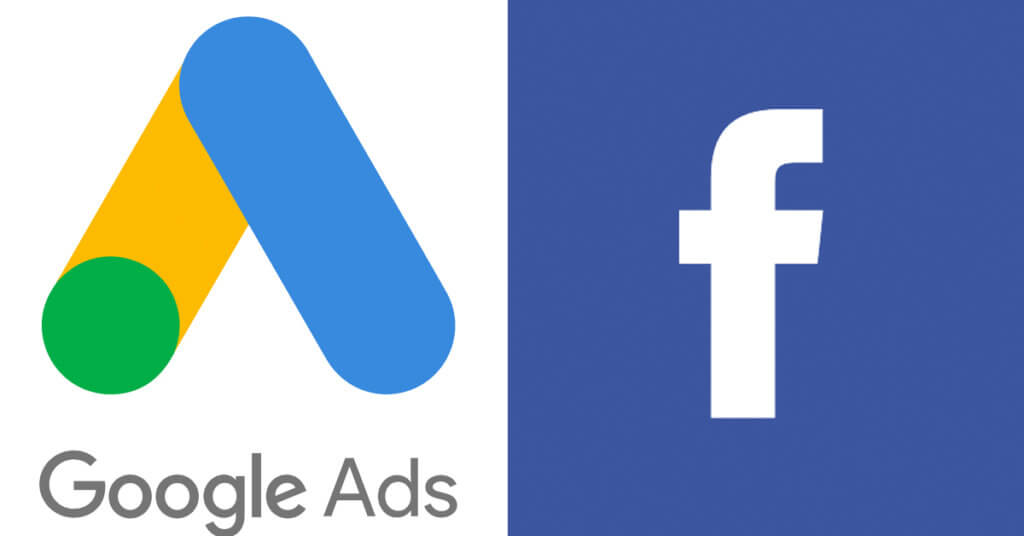Google and Facebook ads
Google and Facebook ads account for almost 60% of digital ad spending. 37% are Google ads and 22% are Facebook ads.
Since the numbers indicate most online advertisers use these two platforms, you want the best performance. This means not doing things that can waste money and impact results.
Here are the 7 deadliest Google and Facebook ad mistakes to avoid.
Google Ads mistakes – keywords
- TOO MANY KEYWORDS: The issue is ad relevance and cost. If you have too many keywords in too many areas, your ads lose relevance to the target you are trying to attract. And this drives up the cost. For example, let’s say you’re selling blue Nike running shoes. Nike shoes are too general. It misses runners. Color might be helpful to mention too. If you start with a manageable group, say 20-24 keywords, you can see what’s working. You can always add more.
- WRONG MATCH TYPE: There are 4 match types – Broad, Broad Match Modifier, Phrase, and Exact. As the names connote, the targeting is wide to more specific as you go. Ladies’ hats, as a broad keyword, may include ladies’ scarves or men’s hats. For phrase match, it would only include ladies’ hats and additional words like color or where to find them.
- INCORRECT BID STRATEGY: How much you pay is determined by whether you want people to click on your ad or take an action when they get to your website or a conversion. Google Ads automatically set your bids based on your average CPA (Cost Per Acquisition or Cost Per Action). Your CPA is the amount of money that you can afford to spend on one customer. But if you don’t know your acquisition costs or have not set up conversion activities, that’s a problem. CPA won’t work for you. It will only drive up your costs.
Google Ads mistakes – ads
- TOO MANY OR TOO FEW ADS: 2 to 6 ads per Ad Group is what Google recommends. As a result, don’t overstuff your Ad Groups with ads. In addition to not being necessary, too many ads make it difficult to see what’s working.
- NO EXTENSIONS: Ad Extensions are offered by Google for Sitelinks, Callouts, and Call Numbers. Since they increase ad presence, add more communication value, are free, and improve ad results, anyone who advertises on Google Ads should use them.
- MISGUIDED DESTINATION URLS: A key benefit of both Google and Facebook ads is they take viewers to a specific destination on your website. For example, you can take to the URL where they buy your product or where they locate a store that sells it. Take viewers to the home page. You may not get the results you want.
- NO CLEAR TARGETS FOR KEY METRICS: To achieve the best results and the most efficient spend, establish targets for key metrics like CPC (Cost-Per-Click), CTR (Click Through Rate), Conversion Rate, and Cost/Conv. When you do, you have control of your ad investment.
Facebook Ads mistakes – targeting
- POOR TARGETING: The difference between a Google and Facebook ad is the former show ads when specific keywords are searched. The latter shows ads by how the target is defined. Poor targeting often occurs if the audience is too broad. If your audience is millions of people, are there millions of people potentially interested in buying my product? For example, if Facebook’s campaign setup interface shows that for the budget of $2,000 you can reach 250,000 people out of 2 million, you might want to consider downsizing your audience.
- AD FATIGUE: This can affect even the most successful Facebook ad campaigns. It occurs when your campaign frequency gets too high, causing your target audiences to see the same ads again and again. Be clear on the results for your ads. When they start to wane, ad fatigue may be setting in.
- NOT USING FACEBOOK PIXELS: The Facebook Pixel is a piece of code for your website that lets you measure, optimize, and build audiences for your ad campaigns. When someone visits your website and takes an action (for example, buying something), the Facebook pixel is triggered and reports this action. This way, you’ll know when a customer took an action after seeing your Facebook ad. By not using it, you’re limiting your ad’s potential.
- WRONG LOOKALIKE AUDIENCES: A Lookalike Audience is a way to reach new people who are likely to be interested in your business because they’re similar to your best existing customers. However, they are not a silver bullet for every business. For e-commerces businesses, they can be especially valuable. That’s because you could make a lookalike audience of your customer list. In other cases, they may not add much value or not help to target.
Facebook Ads mistakes – ad creative
- WRONG AD TYPE: Facebook has many ad types. There are 1) Newsfeed 2) Right Column 3) Lead, 4) Carousel 5) Dynamic Product 6) Page Like 7) Canvas 8) Event and 9) Video. Choose the wrong target ad, you may not take the viewer where you want them to go (e.g. website, form, landing page, stay on the Facebook page).
- POOR IMAGE AND VIDEO CHOICES: Considering that images are responsible for 75%-90% of ad performance, pay close attention to what visuals you’re using in your Facebook ads. Research by David Ogilvy concluded images are viewed and absorbed first before any text is read. Make image and video choices thoughtfully.
- HEADLINES AND TEXT THAT DON’T MAKE IT: Facebook ads are less restrictive than Google ads in terms of character counts. However, since there’s less of a formula, there’s more attention to pay to make sure you hit the mark with headlines and text and they stand out.
Are you making any of these Google and Facebook ad mistakes? Does this help to avoid them?

